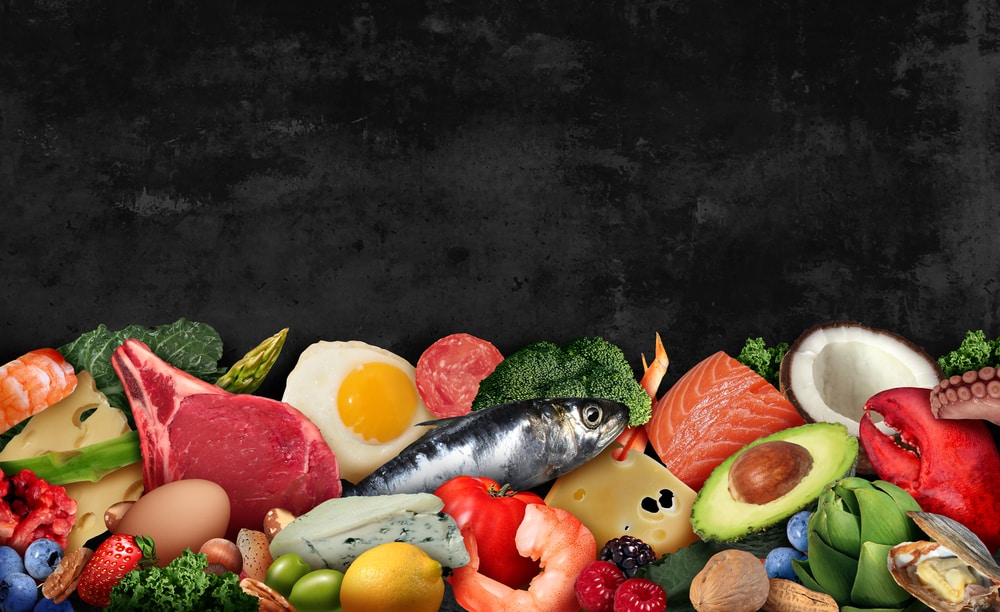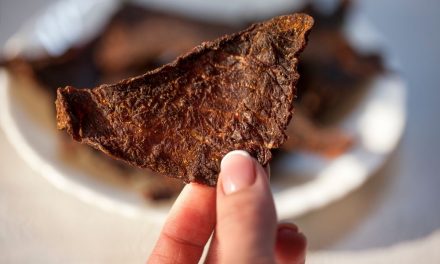You may have heard of the Mediterranean Diet. It’s one of the healthiest diet in terms of heart health and is a good regimen for losing weight.
It includes basic food items found in the diet of the countries bordering the Mediterranean Sea, including Greece and Southern Italy.
In a Mediterranean Keto Diet plan, some changes are made in the Mediterranean diet.
You’ll find that carbohydrate rich food items, including some fruits, cereals, and breads are either taken off the list or used minimally.
The Mediterranean Keto Diet combines the benefits of the Ketogenic Diet with the Mediterranean Diet.
Can you Combine Keto and Mediterranean diet?

There is no incompatibility with Keto and Mediterranean Diet. All you need to do is make some fine adjustments. So if you are on Keto and would want to shift to a Mediterranean keto diet it’s not a radical shift.
But let’s first distinguish the two. How are they different? And how are they similar? When we see their similarities or their compatibility, it would help us to understand how a Mediterranean keto diet is possible.
Mediterranean and Keto Diet Differences
One basic difference between Keto and Mediterranean is the amount of carbs that each program allows. Keto is quite strict in its daily net carbs limit.
Strict keto diets allow 20 grams of net carbs per day. More relaxed keto diet or a low carb diet allows up to 50 grams of net carbs per day.
On the other hand, Mediterranean allows you to consume carbohydrates to as much as 25% of your meals. The Mediterranean diet does not put such a strict limit on your carb intake.
In other words, for every meal you eat, 25% of what’s on your plate can be carbs. It can be from fruits and vegetables, grains, legumes, or bread. This is a very liberal amount of carbs, from a Keto standpoint.
Mediterranean and Keto Diet Similarities

So, we’ve seen how, basically, Keto and Mediterranean diet differ. But are they incompatible? No, they are not. Because of their similarities.
First, and most important similarity is that both Keto and Mediterranean emphasize the importance and primacy of whole (real) foods.
By whole or real food is meant food that are not extensively processed. Fruits and vegetables that come straight from the garden are excellent examples of real foods.
Fish, poultry, and meats are considered whole foods, for as long as they are simply cooked after butchering.
Canned foods and foods that have undergone a lot of chemical preservation are what’s generally referred to as processed food.
Some sort of processed food are allowed on both Keto and Mediterranean diet, including cheese, but both diets largely promote the consumption of whole foods.

Secondly, both Keto and Mediterranean diets promote the comsumption of fruits and vegetables. Although in Keto, the choices of fruits are limited to berries which have the lowest carbohydrate content, the choices for vegetables are more abundant.
Keto encourages eating green leafy vegetables, including cabbage, lettuce, or kale as the primary sources of carbs. Here, Keto and Mediterranean are compatible.
Thirdly, both Keto and Mediterranean diets are liberal in the use of good fats. In a Mediterranean diet, your daily calories from fats consists in roughly 40% of your calorie intake.
In Keto, it is recommended for you to consume as much as 70% of your daily calories from fats. Good fats, of course. Both diets rely on good fats for health, with the Mediterranean diet recommending a slightly less amount.
Some plant-based source of good fats include avocados, nuts, coconut oil, and especially olive oil. Plus some fish, including salmon and mackerel, are also an excellent source of good healthy fats.
Lastly, both Keto and Mediterranean diets can be done side by side with Intermittent Fasting (IF). We’ll explain IF in more detail below.
What Mediterranean Food can I eat on Keto?

The foods included in the Mediterranean diet that can be eaten in a Keto diet may be broken down into several food groups.
Vegetables
Among the vegetables green leafy vegetables are high in the list, including lettuce, and kale.
Then there are the cruciferous vegetables: cauliflower, broccoli, cabbage, brussel sprouts, watercress and radish.
Also, nightshade vegetables, like tomatoes, eggplant, and peppers.
You can also occasionally eat pumpkin, which is not normally eaten on a strict ketogenic diet.
Starchy type of vegetables like corn and potatoes are still off the list however, because they contain too many carbs.
Fruits
There are very few low-carb fruits on the Mediterranean diet that can be adopted into the Keto diet.
This is because most fruits are high in natural sugars, fructose and glucose, and have a high glycemic index.
These are readily available carbohydrates that the body uses for energy, and in Keto you are training your body not to rely on carbohydrates for energy, but on ketones.
Cherries, strawberries, blueberries, and any type of wild berries are fruits that have a low glycemic index and are therefore allowed on Keto.
Citrus fruits, grapes and figs are regularly eaten on the Mediterranean diet. If you are going to consume these fruits on the Mediterranean Keto diet, do so in moderation.
Olives and Olive Oil
We put this separately because they can be considered together. Both are allowed and promoted in a Keto Mediterranean diet.
Olives, as fruit, are allowed on Keto. And olive oil is one of the good healthy fats that you can use on a combined Keto Mediterranean diet.
You can use olive oil both in cooking fish, meat, and vegetables. Also, you can drizzle olive oil generously on your salads.
Other Fat Sources
Butter and ghee are also compatible with Keto and the Mediterranean keto diet.
Avocado and avocado oil are also a fat source in both Keto and Mediterranean diets.
Nuts, like walnuts, almonds, and cashew are also a good source of healthy fats that you can eat on a combined Mediterranean keto diet.
Meats and Proteins
You can eat all types of fish, poultry, and meats that are in a Mediterranean diet, on Keto.
Grains and Legumes
Many of the grains and legumes that are regularly eaten in a Mediterranean diet are not allowed on Keto, because grains and legumes are rich in carbohydrates.
So, these are many of the foods that can crossover, if you are thinking of combining both the Mediterranean and keto diets.
How Many Carbs are Allowed on the Mediterranean Diet?

The basic meal plan on a Mediterranean diet consists largely in vegetables and fruit.
According to a nutrition expert, half of your plate should contain a mix of vegetables and fruit.
With half your plate filled with greens, the rest (25%) will be filled up with carbs from grains, legumes, pasta, or bread, and of fish or meat (25%) as your protein source.
Your daily calories comes mainly from fats (40%) and carbohydrates (40%) and a lesser amount from protein (20%).
Mediterranean Diet vs Keto

You don’t necessarily have to pit one against the other – Mediterranean vs Keto.
Each style of eating has its benefit for your body and health. And you can use both with positive results in terms of improved health and in losing weight.
In a Mediterranean diet your daily macronutrients generally consists of 40% fats, 40% carbs, and 20% proteins.
Much of the fats and carbs you consume in a Mediterranean diet comes from plant-based sources. Protein sources largely come from fish, chicken, meats, eggs, cheese, and some nuts.
In comparison, the keto diet daily Macros would consist of 70% fats, 20% protein, and 5 – 10% carbohydrates.
You can see that the major difference between the two is the heavy restriction on daily carbs intake if you are on Keto.
Keto’s higher reliance on fats differs from Mediterranean only in a matter of degree.
How Do I Switch from Keto to Mediterranean Diet?

Because of their obvious compatibility, switching from Keto to Mediterranean does not demand drastic changes in what you eat.
All you need to do is to make a list or a mental note of what foods allowed in the Mediterranean diet are carb-laden or have a high net carbs content, where, Net carbs = Total carbs – Dietary Fiber.
Fiber doesn’t count in net carbs since you can’t digest them.
If you have preference for any of the foods that made the list, just add them to the list of Mediterranean diet options.
Since by this time, some of them have already been crossed out in your list of Keto compatible foods.
So you have food items on your list or mental note that are compatible to both Keto and Mediterranean, and you have a column for high carb foods allowed only on a Mediterranean diet.
Cycling Mediterranean Keto Diet

If you plan to switch from Keto to Mediterranean, and back, you can do it in a 5-2 cycle, where you are on Keto for 5 days and on Mediterranean for 2 days, in a recurring cycle.
This allows your body to adapt to your shifting diet patterns: 5 days on ketones, 2 days on glucose. It’s easier for your body to develop metabolic flexibility if you adapt this program.
What kind of Cheese is allowed on the Mediterranean diet?

Cheese is an excellent source of fats, protein, calcium, and vitamin A and B-12, zinc and phosphorus.
There is no restriction to the kinds of cheese you can eat in a Mediterranean diet. There is only a word of caution to eat cheese in moderation.
Among the cheeses found in a Mediterranean diet you can enjoy the hard cheeses like Parmigiano-Reggiano (Parmesan), Pecorino, and Manchego.
Also, there are a lot of soft cheeses you can choose from, including Brie, Ricotta, Chevre, and Feta.
Full fat Greek Yogurt can also be included in the list.
Can you combine the Keto Mediterranean diet and Intermittent Fasting?

Intermittent Fasting or IF is a stand alone program on its own. In other words, you can do Intermittent Fasting even if you are on a regular diet.
But can you combine the Keto Mediterranean diet and Intermittent Fasting? Yes, you can. In fact, Intermittent Fasting is a good enhancer of some of the benefits of the Mediterranean Keto diet.
One of the main benefits of intermittent fasting is metabolic flexibility. So, if you do intermittent fasting alongside a Keto Mediterranean diet you are likely to reap the benefits of both schemes in a synergistic way.
In intermittent fasting there is a fasting period alternated with an eating window. Your day is divided between these two periods.
For example, one of the most common fasting routines is the 16:8 IF, where you have a 16 hour fasting period alternated with an 8 hour eating window.
Longer Intermittent Fasts like 18:6 IF and 23:1 IF require more experience.
The only thing you need to remember in combining IF with the Keto Mediterranean diet is during your eating window you need to eat food on the low carb Mediterranean diet list.
Conclusion

In conclusion, if you combine the two diets into a Keto Mediterranean diet, a Mediterranean Keto diet or a low carb Mediterranean diet, whichever way you want to call it, you get the best of both worlds (so to speak).
In the Mediterranean diet you reap health benefits including lowering blood pressure and avoiding diabetes, while maintaining a balanced diet in most every meal. And your weight is well managed.
On the other hand, on a Ketogenic low carb diet, your main takeaway is your body’s heavy reliance on ketones to use fat for energy instead of glucose as its primary source of energy.
Ketones are more efficient fuel sources for the body’s physical and mental needs. You feel more energized. On top of that, because Keto burns enormous amounts of stored body fats, you lose a lot of weight in the process.
The combination Keto Mediterranean diet brings together the benefits of both diets in a single bundle. As with any eating plan, your body will adjust.
If you find you hit a weight loss plateau on the Mediterranean keto diet, it may be due to the slight increase in carbs.
Keep a food diary, watch your portion sizes and eat a balanced Mediterranean keto diet and enjoy the benefits of both eating styles for your health and wellbeing.
For more information, take a look at these Mediterranean Keto Cookbooks on Amazon:









